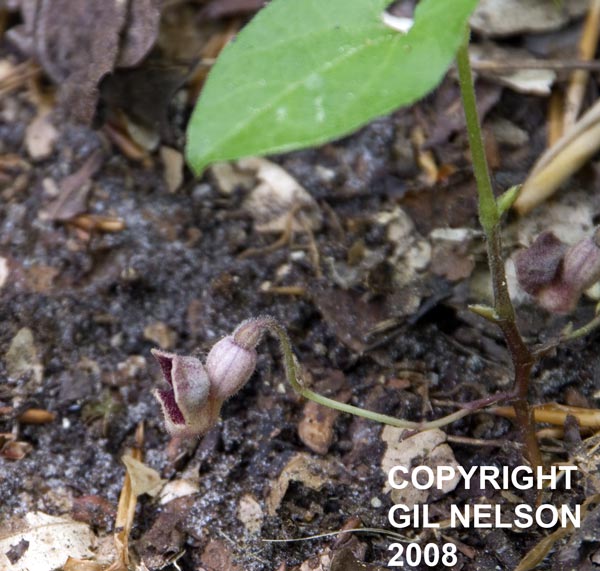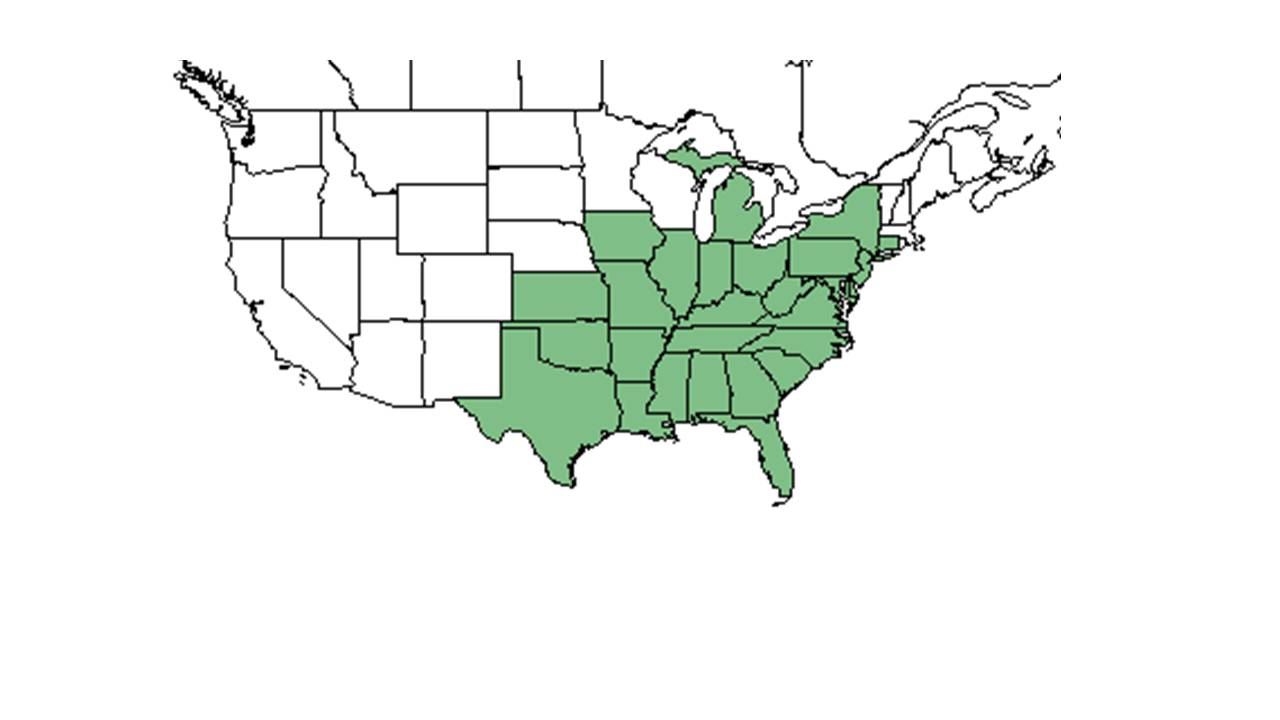Difference between revisions of "Endodeca serpentaria"
(→Photo Gallery) |
|||
| Line 19: | Line 19: | ||
Common names: Turpentine-root, Virginia snakeroot, Serpent birthwort | Common names: Turpentine-root, Virginia snakeroot, Serpent birthwort | ||
| − | |||
==Taxonomic notes== | ==Taxonomic notes== | ||
| + | Synonyms: ''Aristolochia serpentaria'' (L.); ''A. hastata'' Nuttall; ''A. serpentaria'' var. ''hastata'' (Nuttall) Duchartre; ''A. convolvulacea'' Small; ''Endodeca hastata'' (Nuttall) Rafinesque; ''E. serpentaria'' | ||
==Description== | ==Description== | ||
<!-- Basic life history facts such as annual/perrenial, monoecious/dioecious, root morphology, seed type, etc. --> | <!-- Basic life history facts such as annual/perrenial, monoecious/dioecious, root morphology, seed type, etc. --> | ||
| Line 29: | Line 29: | ||
It is found as north as Connecticut, west to Illinois, and south to central peninsular Florida, then west to Texas (Weakley 2015). | It is found as north as Connecticut, west to Illinois, and south to central peninsular Florida, then west to Texas (Weakley 2015). | ||
| − | ==Ecology== | + | <!--==Ecology==--> |
===Habitat=== <!--Natural communities, human disturbed habitats, topography, hydrology, soils, light, fire regime requirements for removal of competition, etc.--> | ===Habitat=== <!--Natural communities, human disturbed habitats, topography, hydrology, soils, light, fire regime requirements for removal of competition, etc.--> | ||
| Line 36: | Line 36: | ||
===Phenology=== <!--Timing off flowering, fruiting, seed dispersal, and environmental triggers. Cite PanFlora website if appropriate: http://www.gilnelson.com/PanFlora/ --> | ===Phenology=== <!--Timing off flowering, fruiting, seed dispersal, and environmental triggers. Cite PanFlora website if appropriate: http://www.gilnelson.com/PanFlora/ --> | ||
It flowers from May to July (Weakley 2015). | It flowers from May to July (Weakley 2015). | ||
| − | + | <!--===Seed dispersal===--> | |
| − | ===Seed dispersal=== | + | <!--===Seed bank and germination===--> |
| − | ===Seed bank and germination=== | + | <!--===Fire ecology===--> <!--Fire tolerance, fire dependence, adaptive fire responses--> |
| − | ===Fire ecology=== <!--Fire tolerance, fire dependence, adaptive fire responses--> | + | <!--===Pollination===--> |
| − | ===Pollination=== | + | <!--===Use by animals===--> <!--Herbivory, granivory, insect hosting, etc.--> |
| − | ===Use by animals=== <!--Herbivory, granivory, insect hosting, etc.--> | + | <!--===Diseases and parasites===--> |
| − | ===Diseases and parasites=== | ||
==Conservation and Management== | ==Conservation and Management== | ||
==Cultivation and restoration== | ==Cultivation and restoration== | ||
Revision as of 15:58, 10 March 2016
| Endodeca serpentaria | |
|---|---|

| |
| Photo taken by Gil Nelson | |
| Scientific classification | |
| Kingdom: | Plantae |
| Division: | Magnoliophyta - Flowering plants |
| Class: | Magnoliopsida – Dicotyledons |
| Order: | Aristolochiales |
| Family: | Aristolochiaceae |
| Genus: | Endodeca |
| Species: | E. serpentaria |
| Binomial name | |
| Endodeca serpentaria L. | |

| |
| Natural range of Endodeca serpentaria from USDA NRCS Plants Database. | |
Common names: Turpentine-root, Virginia snakeroot, Serpent birthwort
Contents
Taxonomic notes
Synonyms: Aristolochia serpentaria (L.); A. hastata Nuttall; A. serpentaria var. hastata (Nuttall) Duchartre; A. convolvulacea Small; Endodeca hastata (Nuttall) Rafinesque; E. serpentaria
Description
A description of Endodeca serpentaria is provided in The Flora of North America. The variation of this species needs to be further studied (Weakley 2015).
Distribution
It is found as north as Connecticut, west to Illinois, and south to central peninsular Florida, then west to Texas (Weakley 2015).
Habitat
This species grows in mesic woodlands, rich mixed woodlands along creeks, wooded floodplains, and hardwood slopes (FSU Herbarium). It is found in floodplains or slopes in soils varying from dry to wet sandy loam (FSU Herbarium). This species has also been spotted in disturbed areas such as fire breaks (FSU Herbarium). It thrives in shaded environments as well (FSU Herbarium).
Phenology
It flowers from May to July (Weakley 2015).
Conservation and Management
Cultivation and restoration
Photo Gallery
References and notes
Florida State University Robert K. Godfrey Herbarium database. URL: http://herbarium.bio.fsu.edu. Last accessed: June 2014. Collectors: L. C. Anderson, R. R. Clinebell II, R. K. Godfrey, and M. Jenkins. States and Counties: Florida: Calhoun, Gadsden, Jackson, Lafayette, and Leon. Georgia: Thomas.
Weakley, Alan S. Flora of the Southern and Mid-Atlantic States: Working Draft of 21 May 2015. University of North Carolina Herbarium (NCU). PDF. 127.